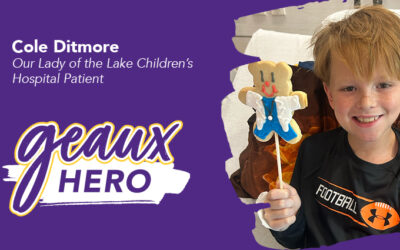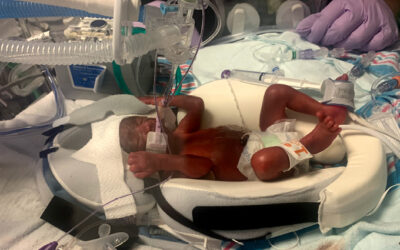While strokes are most commonly associated with older people, it’s a misconception that they only happen to the elderly.
Data shows that more younger individuals are at risk of experiencing strokes or transient ischemic attacks (TIA), also known as “mini-strokes”
Ashok Reddy Polu, MD, vascular neurologist and neurohospitalist with Our Lady of the Lake Health and The NeuroMedical Center Clinic, explains how TIAs are warning signs of increased risk of stroke.
Defining TIAs
Although often called “mini-strokes,” TIAs should not be taken lightly. A TIA is a temporary episode of stroke-like symptoms that usually lasts less than 24 hours. Like a stroke, a TIA is caused by a temporary interruption in blood flow to part of the brain, but unlike a stroke, the blood flow is restored before any permanent damage is done.
TIAs are a warning sign of an increased risk of having a full-blown stroke in the future. In fact, the risk of having a stroke within 90 days of a TIA is about 10% to 20%, so a complete stroke workup should be done on patients who have experienced a TIA.
TIAs Trending Younger
Several factors may contribute to this unfortunate trend of TIAs increasing in younger people. These include obesity and diets high in saturated fats and sodium. These can increase the risk of high blood pressure (hypertension), high cholesterol and Type 2 diabetes, which are risk factors for stroke and TIA.
Other stroke risk factors include sedentary lifestyles, smoking and substance abuse, stress and genetics. Read more about the demographics of stroke risk.
Reducing Your Stroke Risk
Regardless of your age making lifestyle changes to reduce your risk factors can help lower your overall risk of stroke and TIA.
While understanding your personal stroke risk and taking steps to improve your health are important, not all strokes and TIAs are preventable. Some people experience them despite living healthy lifestyles.
Don’t Delay Stroke Treatment
Minutes matter when it comes to stroke care, reducing the damage and increasing the chances of survival and recovery. The longer it takes to receive treatment, the greater the potential for brain damage and disability.
The American Stroke Association states that “Time is Brain” when it comes to stroke care. Brain cells begin to die within minutes of being deprived of oxygen and nutrients, so every minute that passes before treatment is initiated can result in more damage and potentially long-lasting disability.
When someone is experiencing symptoms of a stroke, such as sudden weakness or numbness on one side of the body, difficulty speaking or understanding speech or sudden vision changes, it is important to seek medical attention immediately. Calling 911 or going to the emergency room right away can make a big difference in terms of the quality of care that the person receives.
What Are Stroke Treatments?
The most common type of stroke is ischemic, when the blood flow to the brain is blocked. The most effective treatment is using a medication called tPA (tissue plasminogen activator), which works to dissolve the clot blocking the blood flow.
However, tPA can only be administered within a certain window of time, typically within 4.5 hours of symptom onset, so it is important to seek care as soon as possible. Other patients may be eligible for a mechanical thrombectomy procedure, which involves physically removing the clot using a catheter inserted into the blood vessels.
Overall, if you or someone you know is experiencing symptoms of a stroke, it is important to act quickly and call 911 or go to the emergency room right away. Time is of the essence when it comes to stroke care, and seeking care quickly can make a big difference in terms of outcomes and recovery.
The less common type of stroke is hemorrhagic, which is when a blood vessel to the brain ruptures, and outcomes are typically much worse than ischemic stroke.
How Do Treatments Vary for TIAs and Stroke?
The treatments for TIAs and ischemic strokes can be similar in some ways, but there are also some key differences. In general, the goal of treatment for both TIAs and ischemic strokes is to prevent further damage to the brain and to reduce the risk of future events.
A TIA wouldn’t require tPA medication or mechanical thrombectomy procedure, but the rest of the workup is similar, often to determine the underlying cause of the event. This may involve diagnostic tests of the brain and heart and blood tests. Depending on the results, treatments may include medications to control blood pressure, cholesterol and/or blood sugar levels with an overall goal of reducing blood clots.
Having a TIA or ischemic stroke increases the risk of having (another) ischemic stroke. To reduce that risk, patients should follow a healthy lifestyle, exercise regularly, take their medications as prescribed, manage underlying health conditions, get regular checkups and seek medical attention promptly if stroke-like symptoms return.
Learn more about your own risk of stroke by speaking with a primary care provider. Connect with one of ours here.
In addition to his work with Our Lady of the Lake Health and The NeuroMedical Center Clinic, Dr. Polu teaches residents in training, is an assistant professor with LSU, diplomate of the American Board of Psychiatry and Neurology and a member of the American Board of Medical Specialties.




